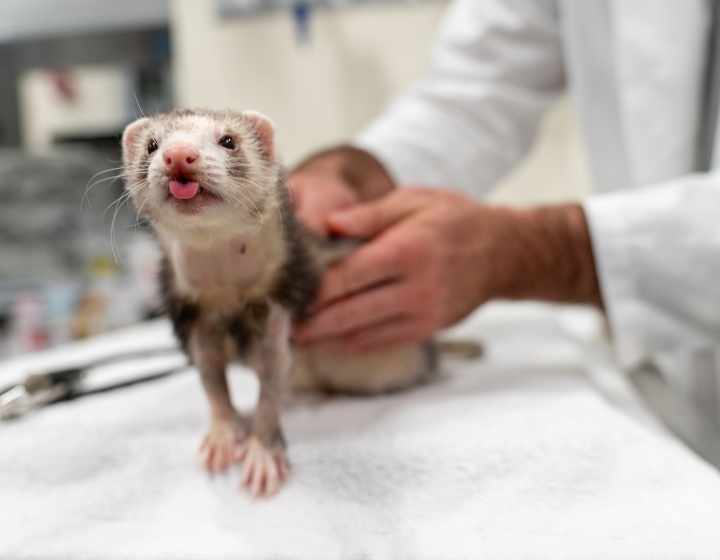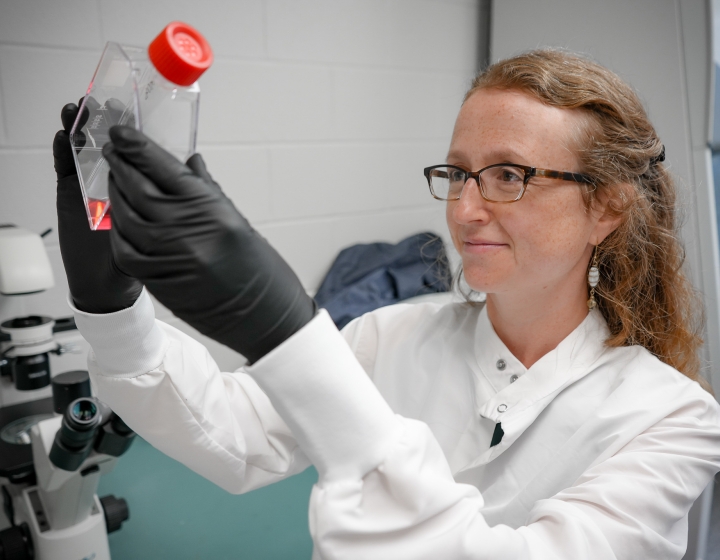Phage against the machine: revealed molecular mechanism could help defeat dangerous bacteria
With antibiotic resistance on the rise, new weapons are needed in our arsenal against drug-resistant bacteria. Bacteriophages present a promising alternative. These are viruses that prey specifically on bacteria and have been used in the past to defeat bacterial infections. However, to harness the full potential of phage-base therapy, scientists must better understand the interplay of bacterial defense and viral attack. Now, in a paper recently published in Nature Communications, scientists at the Cornell University College of Veterinary Medicine have unveiled the structure and mechanism of a widely conserved bacterial defense system used to counter bacteriophage attacks, which provides new opportunities for making phage-based therapies much more effective.
“Clinically, phage therapy is becoming more relevant than ever,” says Dr. Joshua Chappie, the Nancy and Peter Meinig Family Investigator in the Life Sciences at the College of Veterinary Medicine. “So it has become imperative that we identify the molecular barriers hindering phage infection and figure out how they provide protection to the bacterial host.” By understanding the fundamental mechanisms of bacterial defense machineries, scientists hope to find new ways to weaken them.
Molecular motor
As part of this quest, Chappie has focused on McrBC, a microbial enzyme complex prevalent in bacteria and their single-celled cousins, archaea, that recognizes and destroys viral DNA. This complex is composed of two proteins: McrB and McrC. McrB is a molecular motor that is powered by breaking down an energy molecule, GTP, via a chemical reaction known as hydrolysis. Its partner, McrC, is a nuclease enzyme that cleaves DNA. When assembled, McrC stimulates McrB’s GTP hydrolysis. This interaction provides the energy to move the complex, allowing it to function across thousands of base pairs of DNA. The molecular basis for McrC stimulation and the mechanics underlying motor function have remained a mystery, despite this system being studied extensively since the early 1950s.
To address these questions, Chappie and his research team used high-powered microscopic technology known as cryogenic electron microscopy (cryo-EM) to get a close-up look at the McrBC system from the archaea Thermococcus gammatolerans. They found McrB formed a six-membered ring with McrC inserted into the center. The McrB subunits, however, were arranged asymmetrically, with four of them locked together tightly and two of them more loosely connected. This architecture constrains McrC, allowing it to activate only one McrB subunit at any given time. The structure also provided snapshots of each McrB subunit at different stages of the GTP hydrolysis cycle. When Chappie’s team compared these states, a model emerged wherein McrC moves stepwise around the ring like the spinner used in a game of Twister, stimulating each subunit sequentially.
“We were able to see that asymmetry is driving the interaction and dictates how McrC engages each subunit at a specific time,” says Chappie. “This coordinates it to move around the ring and never go backwards. It also explains how the complex is 30-40-fold more efficient than when the two components are apart.”
Chappie next wanted to see if McrBC complexes from other organisms operated similarly. With a high-resolution cryo-EM structure of the E. coli complex, they observed the same mode of stimulation. “We saw the same organization and asymmetry,” Chappie explains. “The principles of how the motor works appears to be conserved across evolution.”
New tools
This this is good news for phage therapy development — with a common mechanism and distinctive structural features shared by all McrBC enzymes, scientists could develop broadly effective molecules that gum up the this machine to allow bacteriophages to come in and successfully vanquish their bacterial hosts. “It would be akin to bombing your enemy from the air, and then bringing the cavalry in,” Chappie says.
Nevertheless, a therapy that harnesses this research is still some ways off. Chappie says the next steps will be to visualize how exactly the McrBC complex physically attaches to the viral DNA and how it moves. “We don’t know what a fully assembled unit clamped onto DNA actually looks like,” says Chappie, noting that there is not enough room in the center of the ring for DNA to be threaded through — so it must interact with the outer edge of the ring. “And we don’t know if it’s twisting, looping or sliding — we just have no idea.”
With luck, these new insights will eventually make bacteriophages an effective tool in the toolkit for battling bacteria.
-Written by Lauren Cahoon Roberts




